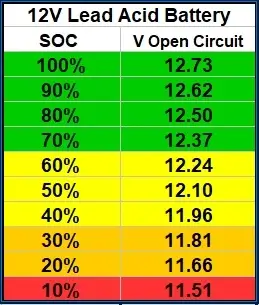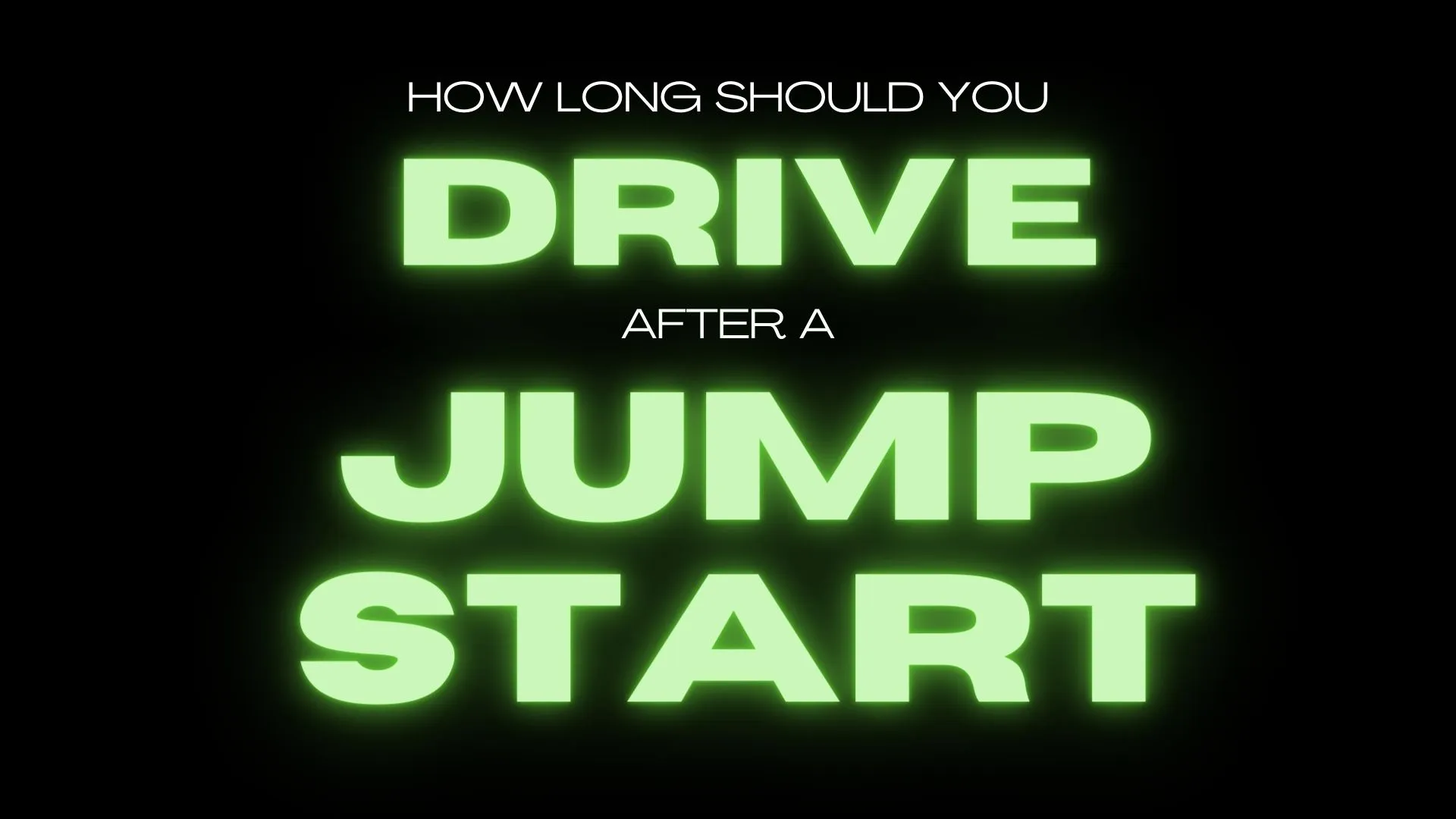Don’t get stranded on the road. Find out ‘How Long Should You Drive After a Jump Start?’ with our expert advice.
If you’ve ever had a dead car battery, you know how frustrating it can be. Fortunately, a jump start can get you back on the road nice and quick. The last thing you want after that effort is to stop the motor and have to go through it again.
So once you get your car started, how long should you drive it before turning it off again? The answer is that it is best to drive your car around for at least 30 minutes after a jump start. An idling motor or even a revving stationary motor just won’t cut it for your battery.
In this article, we’ll explain why it’s important to drive your car for this amount of time and what can happen if you don’t. We’ll also talk about how to prevent future dead battery problems.
Table of Contents
How Long Should You Drive After a Jump Start
Around half an hour is the minimum time that you should drive your vehicle. For this reason, it is always a good idea to keep your tank around a quarter full in case of just such a scenario.
To make sure that the battery is good going forward and isn’t going to strand you, highways speeds are best.
This 30-minute blast will give your alternator enough time to charge your battery.
But as with many things, it isn’t a case of 30 minutes is best for all vehicles. There is some nuance and a few factors can affect the time needed to give the battery a good charge.
Factors That Affect How Long You Should Drive
Here’s some factors.
Battery Age and Condition
The age and condition of the battery can affect how long it takes to charge. So it also affects how long you should drive your car after a jump start.
If the battery is old or in poor condition, it may not hold a charge as well as a newer or well-maintained battery. In this case, it may take longer for the alternator to charge the battery. You may need to drive your car more to ensure a good charge.
To assess the battery’s health and capacity, you can test it using a battery charger. Or, you can take it to a mechanic or Autoparts center to have it tested.
You should also check the battery terminals for corrosion. This can affect the speed of the charge but is simple to rectify. Use caution when you conduct your inspection. If the battery case is cracked or swollen, get a new one asap.
Length of the Jump Start
How long you connect your car before the jump will also affect how long you should drive it after the jump.
If you are using another car to jump your own, charge the battery for a short time before doing the jump.
Doing this will mean that the jump will be easier and less strenuous for the battery. The longer the initial charge, the less time you need to drive.
Driving Conditions and Distance
The driving conditions and distance also affect how long to drive. Driving in the city, with frequent stops and starts, can drain the battery faster than the highway. On the open road, the battery has a chance to charge quicker.
The driving conditions and distance also affect how long to drive. Driving in the city, with frequent stops and starts, can drain the battery faster than the highway. On the open road, the battery has a chance to charge quicker.
How Does A Jump Start Work?
When a car battery is dead, it means that it doesn’t have enough power to start the engine. A jump start can be used to start the engine by using another car’s battery.
Here’s how a jump start works:
- Park the two cars close to each other, but not touching.
- Turn off both cars and make sure the headlights and other electrical accessories are off.
- Connect the red cable to the positive terminal of the dead battery and the positive terminal of the good battery.
- Connect the black cable to the negative terminal of the good battery and a metal part of the dead car’s engine.
- Start the engine of the car with the good battery and let it run for a few minutes.
- Try to start the engine of the car with the dead battery. If it starts, let it run for a few minutes to charge the battery further.
- Disconnect the cables in reverse order.
Be careful when connecting the cables and connect them to the correct terminals.
Also, never touch the metal parts of the cables together or let them touch the car’s body. This can cause sparks and a potential fire.
Remember that getting the engine going is only part of the solution. The real trick is the charge from the alternator. That will recharge the battery while you are driving the car. If the battery is not charged, the car may not start again.
Also, do not be tempted to leave the car idling in the hope that will charge the battery. While it will work over several hours, it is not very efficient and not recommended. The engine needs a constant significant charge from the alternator.
Likewise, sticking your foot on the gas and revving hard will charge it quicker, but isn’t very good for the health of the engine if you overdo it. And it will annoy the hell out of your neighbors!
Signs of a Fully Recharged Battery
After the jump start, how do we know whether the battery is charged enough? Here are some signs that your battery is sufficiently charged:
- The battery light on the dashboard has turned off
- The headlights are bright and stable
- The radio and other electrical systems are working properly
To check the battery’s health and readiness, a multimeter is a good option. This tool measures the voltage of the battery and says whether the battery has enough charge.

A full battery should have a voltage reading of around 12.6 volts when the engine is off. But you may want to test the battery before you turn off the engine to be sure. If you do this, be careful of moving parts of the engine. You are looking for a voltage reading between 13.7 and 14.7 Volts while the car is running.
It’s also important to keep an eye on the battery’s condition after a jump start. If you notice any of the following signs, it may indicate that your battery is having issues:
- The battery is slow to start or won’t start at all
- The headlights are dim or flickering
- The radio and other electrical systems are not working properly
- The battery is leaking or corroded
If you experience any of these issues, it’s a good idea to have your battery checked by a professional. They will perform a load test to determine if the battery is holding a charge and diagnose any potential issues.
Extending Battery Life and Preventing Future Jump Starts
When it comes to extending the life of your car battery and avoiding future jump starts, there are a few things you can do.
First, make sure to drive your car regularly. If you let your car sit for long periods of time, the battery can lose its charge, which can lead to the need for a jump start. Even just starting your car and letting it run for a few minutes every few days can help keep the battery charged.
There are several reasons why a jump start may be necessary. One common reason is leaving the headlights or interior lights on for an extended period of time. Another possibility is a faulty alternator that doesn’t charge the battery properly while driving.
Second, be mindful of the electrical systems in your car. Running your headlights, air conditioning, and other electrical systems when the engine is off can drain the battery. Make sure to turn off all electrical systems before turning off the engine.
Third, consider investing in a battery charger. A battery charger can help keep your car battery charged and extend its life. There are a variety of battery chargers available, from simple trickle chargers to more advanced smart chargers. These can be used as a countermeasure to the battery’s natural drain if the vehicle sits unused for extended periods.
And, if you buy a smart charger, a Jumpstarter, or a combination of both, you can be prepared for a flat battery emergency.
Fourth, keep your battery clean. Dirt and debris can build up on the battery terminals, which can interfere with the battery’s ability to charge. Use a battery-cleaning solution and a wire brush to clean the terminals regularly.
And finally, if you do need to jump-start your car, make sure to drive it for at least 30 minutes afterward. This will give the battery enough time to charge and can help prevent the need for future jump starts.
Before You Go …
If you want to keep your car’s battery in good shape and keep your car running smoothly, you need to read our latest article: “Trickle Charger Vs Battery Charger: 4 Key Differences You Can’t Risk Ignoring.”
Knowing the differences between a trickle charger and a battery charger can help you make the right choice for your battery and prolong its lifespan. Don’t take any chances – read now and avoid any future issues with your car!
FAQs
Here are some frequently asked questions and their answers:
How long should I drive my car after a jump start?
It’s recommended to drive your car for at least 30 minutes after a jump start to ensure that the battery is fully charged. This gives the alternator enough time to recharge the battery. However, if you have a low battery before starting the process, you should let it run for around 30 minutes.
How do I know if my battery is fully charged?
You can check if your battery is fully charged by using a voltmeter or multimeter. A fully charged battery should read around 12.6 volts. If it reads lower than that, your battery may not be fully charged. If you don’t have the necessary equipment, most local auto parts centers will test your battery free of charge.
Can I drive my car immediately after a jump start?
Yes, you can drive your car immediately after a jump start. However, it’s recommended to drive it for at least 30 minutes to ensure that the battery is fully charged.
Can I turn off my car after a jump start?
After a jump start, we recommended that you let your car run for at least 30 minutes or take it for a drive so the battery fully charges. If you turn off your car immediately after a jump start, the battery may not have enough charge to start the car again.
Can I jump-start my car if the battery is completely dead?
Yes, you can jump-start your car if the battery is completely dead. However, if your battery is dead often, it may be time to replace it.
Can I damage my car by jump-starting it?
Jump-starting your car is safe if done right. But if you connect the cables incorrectly or leave them connected for too long, you can damage your car’s electrical system. It’s important to follow the correct procedure and seek professional help if you’re unsure about the process.


